Most famous Temples in Varanasi
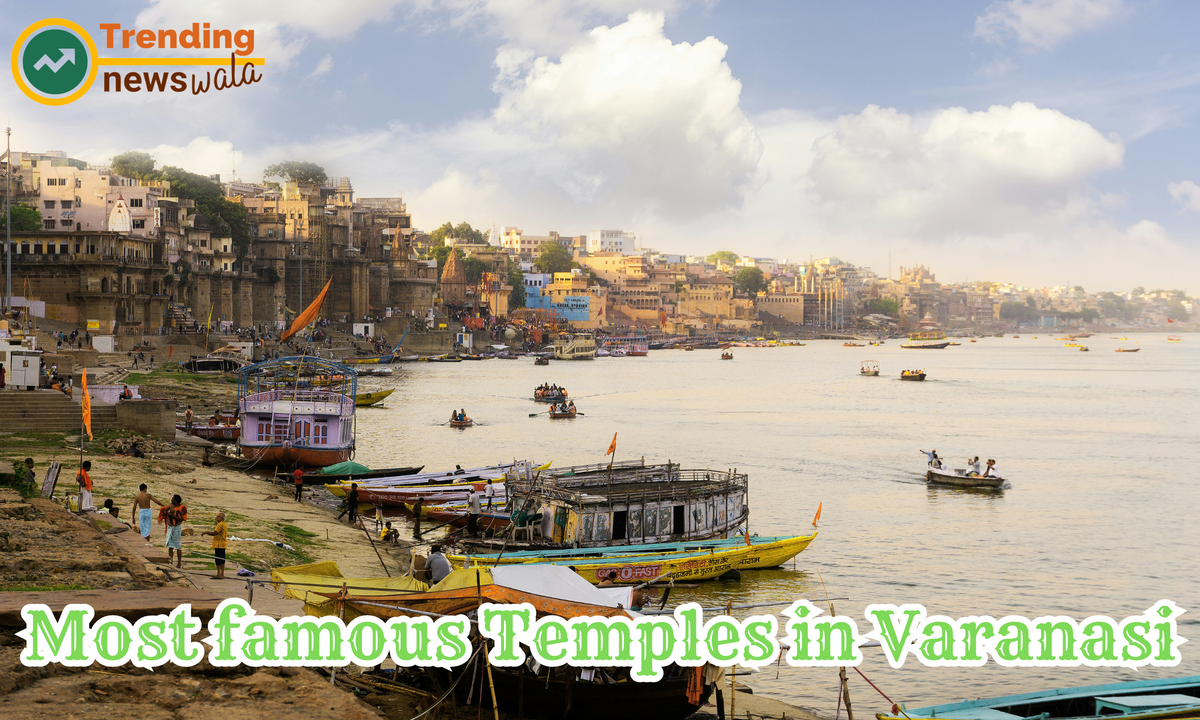
Varanasi also knows as Banaras or Kashi. Do you know that apart from Baba Kashi Vishwanath temple there are many other temples famous for tourist attraction in Varanasi city? Baba Vishwanath Temple is one of The famous Shiva Temple in India Varanasi.
People are trying to find out how many Temple is in Varanasi? Well, it's hard to answer how many temples are in Varanasi. The question sounds like how many droplets are there in a gallon of water. You can find temples at every nook and corner of the city. The more you visit the city, the more you discover the temples.
List of Temples in Varanasi Small & Famous
1. Baba Kashi Vishwanath
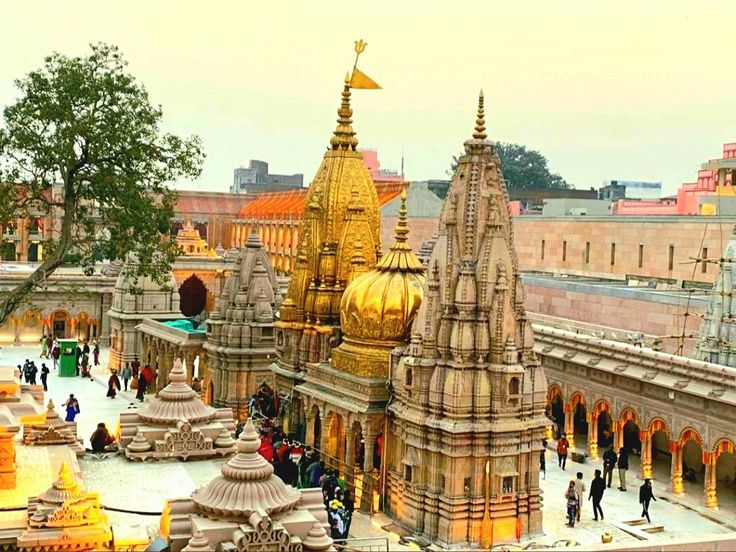
Certainly! The term "Baba Kashi Vishwanath" typically refers to the Kashi Vishwanath Temple, a significant Hindu temple dedicated to Lord Shiva, located in the ancient and holy city of Varanasi (also known as Kashi or Banaras), Uttar Pradesh, India. Here are more details about Baba Kashi Vishwanath and the temple:
Kashi Vishwanath Temple:
- The Kashi Vishwanath Temple is one of the most revered and oldest temples dedicated to Lord Shiva in Hinduism.
- The temple is situated on the western bank of the sacred Ganges River in Varanasi, one of the oldest continuously inhabited cities in the world.
Significance:
- The deity worshipped in the Kashi Vishwanath Temple is known as Baba Kashi Vishwanath, representing Lord Shiva as the "Lord of the Universe."
- The city of Varanasi itself holds immense spiritual significance in Hinduism and is considered a major pilgrimage site.
Jyotirlinga:
- The main lingam (representation of Lord Shiva) in the Kashi Vishwanath Temple is one of the 12 Jyotirlingas, which are considered the most sacred shrines dedicated to Lord Shiva.
- Jyotirlingas are believed to be self-manifested and have great spiritual significance for devotees.
Temple History:
- The history of the Kashi Vishwanath Temple dates back thousands of years, and the current structure was built during the 18th century by Queen Ahilyabai Holkar of Indore after the original temple was destroyed multiple times.
- The temple has undergone several renovations and rebuilds throughout its history.
Architecture:
- The temple showcases a mix of Hindu and Mughal architectural styles. The spire of the temple is adorned with gold plating.
- The main sanctum, or garbhagriha, houses the sacred Jyotirlinga.
Religious Practices:
- The temple attracts a large number of devotees and pilgrims from all over India and beyond.
- Various rituals and ceremonies are performed daily, including the aarti (devotional song) and Rudrabhishek (ritual pouring of water on the lingam).
- Devotees believe that a visit to the Kashi Vishwanath Temple and a dip in the Ganges can lead to liberation from the cycle of birth and death.
Ghats and Cultural Heritage:
- The temple is located near the Dashashwamedh Ghat, one of the prominent ghats along the Ganges River.
- Varanasi, with its ghats, temples, and cultural heritage, is a significant center for spirituality, learning, and the practice of various arts.
Festivals: The festival of Mahashivaratri is celebrated with great fervor at the Kashi Vishwanath Temple. Thousands of devotees gather to offer prayers and participate in the festivities.
Baba Kashi Vishwanath holds a special place in the hearts of millions of devotees, and the temple continues to be a symbol of spirituality, cultural heritage, and religious significance in Hinduism
2. Shree Sankat Mochan Hanuman Temple
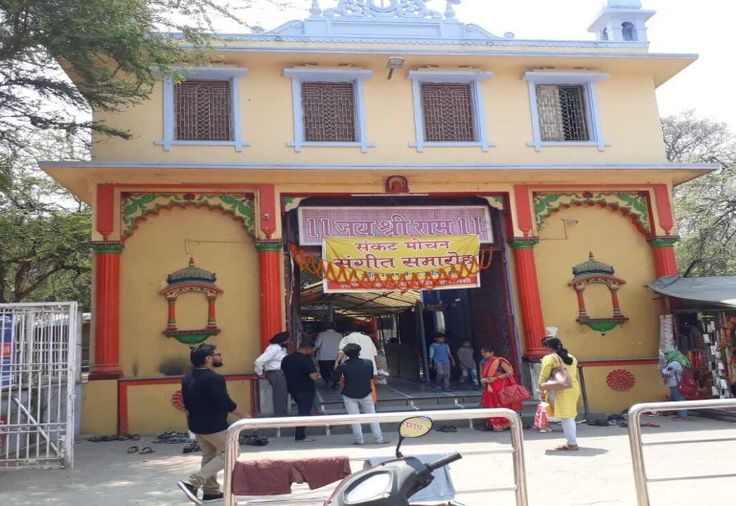
Certainly! The Shree Sankat Mochan Hanuman Temple is a renowned Hindu temple dedicated to Lord Hanuman, located in Varanasi, Uttar Pradesh, India. Here are more details about the Shree Sankat Mochan Hanuman Temple:
Location: The Shree Sankat Mochan Hanuman Temple is situated in the southern part of Varanasi, not far from the Durga Temple and the Banaras Hindu University (BHU) campus.
Deity:
- The primary deity of the temple is Lord Hanuman, who is revered as Sankat Mochan, the "Reliever of Troubles" or the one who dispels obstacles and difficulties.
- The temple is a significant pilgrimage site for devotees seeking the blessings and protection of Lord Hanuman.
History:
- The temple has a rich history and is believed to have been established by the revered Hindu saint, Tulsidas, who was an ardent devotee of Lord Rama and Lord Hanuman. Tulsidas is best known for his epic poem, the Ramcharitmanas.
- The temple has undergone renovations and expansions over the years, with various contributors and devotees supporting its upkeep.
Architecture:
- The architectural style of the Shree Sankat Mochan Hanuman Temple is typically North Indian, with a distinct temple structure and spires.
- The main shrine houses an idol of Lord Hanuman, and the temple complex includes other smaller shrines dedicated to different deities.
Religious Significance:
- Devotees believe that praying to Lord Hanuman at the Sankat Mochan Temple can help alleviate problems, challenges, and hurdles in their lives.
- The temple is particularly crowded on Tuesdays and Saturdays, which are considered auspicious days for worshiping Lord Hanuman.
Special Features:
- The temple is known for its peaceful and spiritual ambiance, attracting both locals and visitors seeking solace and divine blessings.
- It is also famous for its charitable activities and is involved in various social and community welfare programs.
Aarti and Festivals:
- Daily aarti (devotional song) and prayers are performed at the temple, creating a spiritually charged atmosphere.
- The festival of Hanuman Jayanti, which marks the birth of Lord Hanuman, is celebrated with great enthusiasm at the Sankat Mochan Hanuman Temple.
Monkey Population: Like many temples dedicated to Lord Hanuman, the Sankat Mochan Temple has a resident population of monkeys. Monkeys are considered sacred to Hanuman, and they freely roam around the temple premises.
Cultural Heritage: The temple is an integral part of Varanasi's cultural and religious heritage, contributing to the city's reputation as a center for spiritual exploration and pilgrimage.
The Shree Sankat Mochan Hanuman Temple is a place of faith, devotion, and tranquility, drawing devotees and tourists alike to experience the spiritual aura and architectural beauty of the temple
3. Kaal Bhairav Mandir
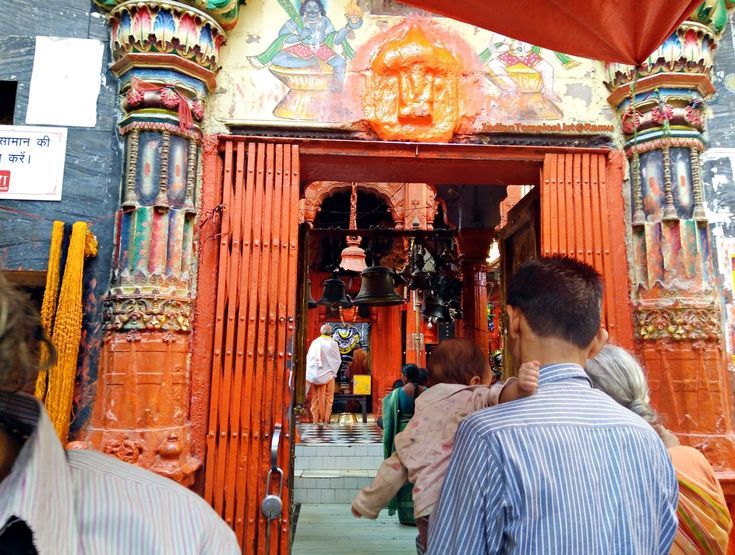
The Kaal Bhairav Mandir is a Hindu temple dedicated to Lord Kaal Bhairav, a fierce manifestation of Lord Shiva. The temple is located in Varanasi, Uttar Pradesh, India, and it holds religious and cultural significance. Here are more details about the Kaal Bhairav Mandir:
Location:
- The Kaal Bhairav Mandir is situated in the Visheshar Ganj area of Varanasi, near the Vishwanath Temple and the Dashashwamedh Ghat.
Deity:
- Lord Kaal Bhairav is considered the fierce form of Lord Shiva and is often associated with time, destruction, and the annihilation of ignorance.
- Devotees seek the blessings of Kaal Bhairav for protection, courage, and the removal of obstacles.
Appearance:
- Lord Kaal Bhairav is typically depicted with a fearsome appearance, adorned with a garland of skulls, holding a trident (trishul) and a skull-topped staff (khatvanga).
- The deity's form symbolizes the impermanence of life and the inevitability of time.
Rituals and Offerings:
- The temple priests conduct specific rituals and ceremonies daily, including aarti (devotional songs) and abhishek (ritual bathing of the deity with various substances).
- Devotees offer various items to Lord Kaal Bhairav, including liquor, flowers, and the traditional offering of black sesame seeds.
Significance:
- The Kaal Bhairav Mandir is considered one of the important shrines in Varanasi, attracting both locals and tourists.
- Lord Kaal Bhairav is believed to be the protector of the city, and his blessings are sought by devotees for the resolution of problems and the removal of negative influences.
Unique Tradition:
- A distinctive tradition associated with the Kaal Bhairav Mandir is the offering of liquor to the deity. Devotees believe that offering alcohol symbolizes surrender and helps fulfill their wishes.
- However, it's important to note that the offering of alcohol is not a universal practice in all Hindu temples, and traditions can vary widely.
Temple Architecture:
- The temple has a traditional North Indian architectural style with a distinctive spire and intricate carvings.
- Devotees enter the temple barefoot, and it is customary to wear black clothes as a mark of respect to Lord Kaal Bhairav.
Festivals:
- The festival of Kaal Bhairav Ashtami, which falls on the eighth day of the Krishna Paksha (dark fortnight) in the Hindu month of Kartik, is celebrated with special fervor at the Kaal Bhairav Mandir.
- During this festival, devotees fast and offer special prayers to seek the blessings of Lord Kaal Bhairav.
The Kaal Bhairav Mandir is not only a place of worship but also a cultural and spiritual landmark in Varanasi. Devotees visit the temple to seek protection and guidance from Lord Kaal Bhairav, making it an integral part of the religious landscape in the city.
4. Sheetla Mata Mandir
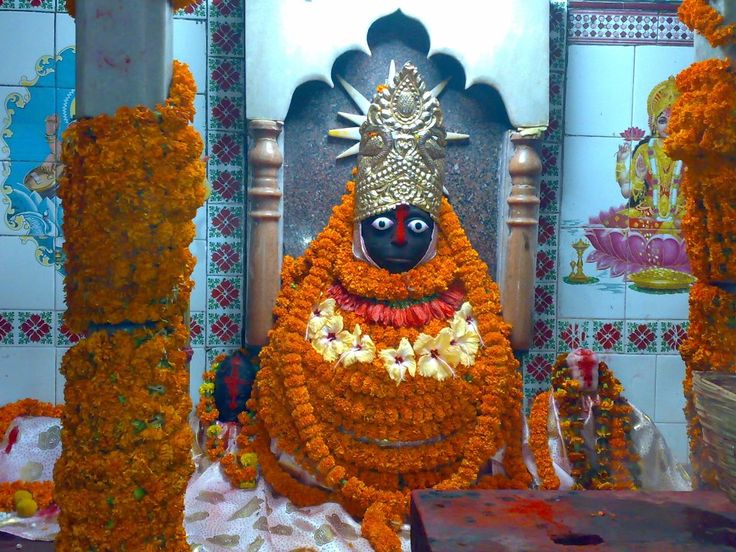
Sheetla Mata Mandir, also known as Shitla Mata Temple, is a Hindu temple dedicated to Goddess Sheetla, a form of the Mother Goddess. The temple is primarily associated with the worship of Sheetla Mata, who is believed to be a goddess of healing and protection. Here are more details about the Sheetla Mata Mandir:
Deity:
- The main deity of the Sheetla Mata Mandir is Goddess Sheetla, also known as Mata or Maa Sheetla.
- She is considered a protective deity, particularly associated with the prevention and cure of diseases, especially those related to smallpox and other infections.
Significance:
- The worship of Sheetla Mata is prevalent in various parts of India, and the goddess is often revered for safeguarding families from epidemics and illnesses.
- Devotees believe that invoking the blessings of Sheetla Mata can provide protection against contagious diseases.
Location: Sheetla Mata Mandirs can be found in different parts of India, and there are multiple temples dedicated to Goddess Sheetla across the country. One well-known temple is located in Gurugram, Haryana.
Rituals and Offerings:
- Devotees visit the Sheetla Mata Mandir to seek the goddess's blessings for the well-being of their families.
- Offerings to Sheetla Mata may include flowers, coconuts, fruits, and traditional sweets.
- Some devotees also offer symbolic items related to health and hygiene.
Festivals:
- The festival of Sheetla Ashtami is celebrated with enthusiasm at the Sheetla Mata Mandir. It falls on the eighth day of the Krishna Paksha (dark fortnight) in the Hindu month of Chaitra (March-April).
- Devotees observe fasts and participate in special prayers and rituals during Sheetla Ashtami.
Temple Architecture:
- The architectural style of Sheetla Mata Mandirs can vary, but they often feature a traditional North Indian temple design with a spire and intricate carvings.
- Some temples have a sanctum where the idol of Sheetla Mata is enshrined, while others may have open pavilions for devotees to offer prayers.
Cultural Practices:
- The worship of Sheetla Mata is deeply rooted in local cultural practices, and the goddess is considered a protector of households and communities.
- Devotees often visit the temple to seek relief from diseases and to ensure the health and well-being of their families.
Pan-Indian Worship: While the Sheetla Mata Mandir in Gurugram is particularly famous, temples dedicated to Sheetla Mata can be found in various states, reflecting the pan-Indian nature of her worship.
The worship of Sheetla Mata is an integral part of the cultural and religious fabric in India, especially in the context of health and well-being. Devotees believe that seeking the blessings of Sheetla Mata brings protection and healing to their homes and communities
5. Maa Annapurna Mandir
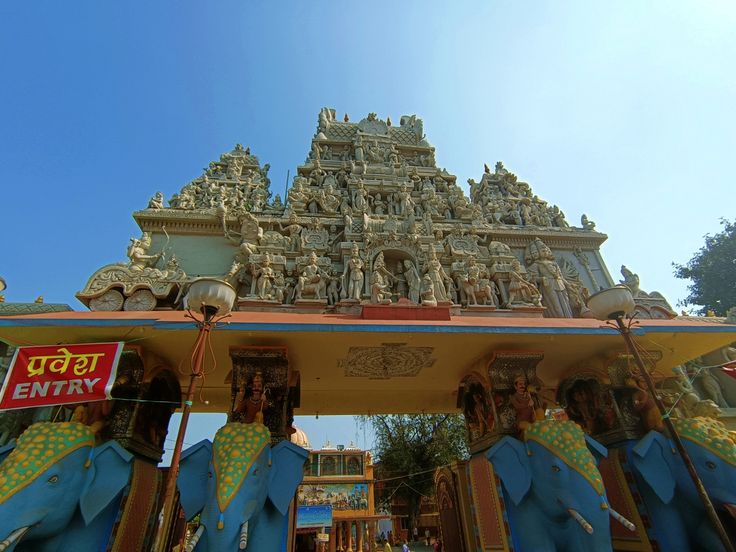
Maa Annapurna Mandir, also known as Annapurna Devi Temple, is a Hindu temple dedicated to Goddess Annapurna, the goddess of food and nourishment. The temple is located in the holy city of Varanasi, Uttar Pradesh, India. Here are more details about Maa Annapurna Mandir:
Deity:
- The main deity of the Maa Annapurna Mandir is Goddess Annapurna, who is considered the provider of food and sustenance.
- Annapurna Devi is often depicted holding a ladle and a container of food, symbolizing her role as the giver of nourishment.
Significance:
- Devotees believe that worshiping Goddess Annapurna brings blessings for abundance, prosperity, and fulfillment of basic needs, especially in terms of food.
- The name "Annapurna" is derived from the Sanskrit words "anna" (food) and "purna" (full or complete), emphasizing the goddess's role in providing nourishment.
Location:
- The Maa Annapurna Mandir is situated in the Vishwanath Gali area of Varanasi, close to the Vishwanath Temple and the Dashashwamedh Ghat.
Temple Architecture:
- The temple follows traditional North Indian architectural styles, with a spire, dome, and intricate carvings.
- Devotees enter the temple barefoot and offer their prayers in a serene and spiritual environment.
Rituals and Offerings:
- Daily rituals, including aarti (devotional songs) and puja, are performed at the Maa Annapurna Mandir.
- Devotees offer various items to the goddess, including grains, fruits, and sweets, as a symbol of gratitude for the food they receive.
Anna Kshetra (Food Area):
- One unique feature of the Maa Annapurna Mandir is the concept of "Anna Kshetra" or the "Food Area." Devotees believe that by offering food to the goddess, they receive her blessings for a prosperous and fulfilling life.
Festivals:
- The festival of Annakut, also known as Govardhan Puja or Annakoot Utsav, is celebrated with grandeur at the Maa Annapurna Mandir.
- During Annakut, a large variety of food items are arranged in the form of a mountain (representing Govardhan Hill), symbolizing the bounty of nature and the goddess's blessings.
Charitable Initiatives:
- Some Annapurna Devi temples, including the one in Varanasi, are involved in charitable activities such as providing free meals to pilgrims, visitors, and the needy.
- The concept of "Anna Daan" (donation of food) is considered a noble and virtuous act in Hinduism.
Maa Annapurna Mandir holds a special place in the hearts of devotees who seek the goddess's blessings for sustenance, prosperity, and the fulfillment of their basic needs. The temple's association with the importance of food in daily life underscores the spiritual significance of nourishment and gratitude
Visitors can offer their prayers and participate in various religious rituals and ceremonies that take place at the temple. The temple premises are beautifully decorated and offer a peaceful atmosphere for visitors to meditate and reflect. Whether you are a devotee of Goddess Annapurna or simply interested in exploring the rich cultural and spiritual heritage of Varanasi, Maa Annapurna Mandir is definitely worth a visit.
6. Nepali Hindu Temple
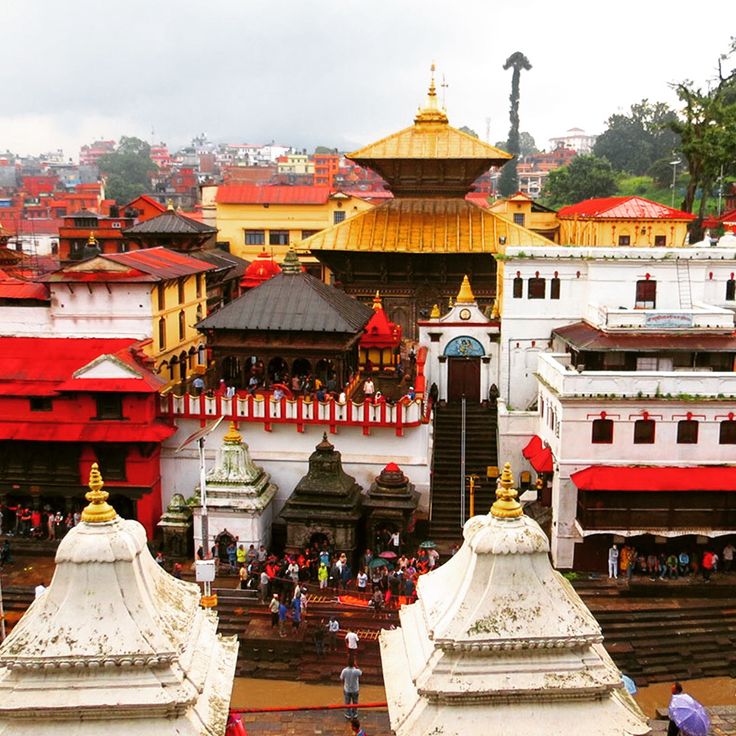
Nepal, being a predominantly Hindu country, is home to numerous Hindu temples with distinct architectural styles and cultural significance. Here are some details about Nepali Hindu temples in general:
Pashupatinath Temple:
- One of the most famous Hindu temples in Nepal is the Pashupatinath Temple, located in the capital city of Kathmandu.
- Pashupatinath is a UNESCO World Heritage Site and is dedicated to Lord Shiva. It is considered one of the holiest shrines for Hindus.
Boudhanath Stupa:
- While not a traditional temple, Boudhanath Stupa in Kathmandu is an iconic Buddhist structure with significant Hindu influence.
- The stupa is a UNESCO World Heritage Site and is a place of worship for both Hindus and Buddhists.
Muktinath Temple:
- Muktinath Temple is situated in the Mustang district of Nepal and is considered sacred by both Hindus and Buddhists.
- The temple is dedicated to Lord Vishnu and is an important pilgrimage site.
Manakamana Temple:
- Manakamana Temple, located in the Gorkha district, is dedicated to the Hindu goddess Bhagwati, an incarnation of Parvati.
- The temple is accessible by a cable car and attracts pilgrims seeking the goddess's blessings.
Gosaikunda Lake:
- Gosaikunda, a high-altitude alpine lake in Langtang National Park, is considered a sacred site associated with Lord Shiva.
- Pilgrims often trek to Gosaikunda during the full moon in August for religious rituals.
Dakshinkali Temple:
- Dakshinkali Temple is situated in the Kathmandu Valley and is dedicated to the goddess Kali.
- The temple is known for its animal sacrifices, particularly during the festival of Dashain.
Changu Narayan Temple:
- Changu Narayan, located near Bhaktapur, is an ancient Hindu temple dedicated to Lord Vishnu.
- It is also a UNESCO World Heritage Site and showcases exquisite wood carvings.
Janaki Mandir:
- Janaki Mandir, located in Janakpur, is a Hindu temple dedicated to Goddess Sita, the wife of Lord Rama.
- The temple is an important pilgrimage site and a center for Rama-Sita devotion.
Gadhimai Temple:
- Gadhimai Temple, situated in Bara district, is known for the Gadhimai Festival, where large-scale animal sacrifices were traditionally practiced.
- The festival has faced criticism for its impact on animal welfare, and efforts have been made to reduce or eliminate such practices.
Kirateshwar Mahadev Temple: Located in Leguwa, Dhankuta, this temple is dedicated to Lord Shiva and is associated with the Kirat community's cultural and religious practices.
Nepal's rich cultural and religious diversity is reflected in its temples, and many of these sites are not only places of worship but also hold historical and architectural significance. Pilgrims and tourists alike visit these temples to experience the spiritual and cultural heritage of Nepal.
Nepali Hindu Temple, also known as the Nepal Temple or the Pashupatinath Temple, is a Hindu temple located in Varanasi, Uttar Pradesh, India. The temple is considered to be one of the most important pilgrimage sites for followers of Hinduism and is dedicated to Lord Pashupatinath, who is considered to be one of the most revered deities in Hinduism.
Visitors can offer their prayers and participate in various religious rituals and ceremonies that take place at the temple. The temple premises are beautifully decorated and offer a peaceful atmosphere for visitors to meditate and reflect. Whether you are a devotee of Lord Pashupatinath or simply interested in exploring the rich cultural and spiritual heritage of Varanasi, Nepali Hindu Temple is definitely worth a visit.
7. Vishalakshi Mandir

As of my last knowledge update in January 2022, I don't have specific information about a temple named Vishalakshi Mandir in Varanasi. However, I can provide some general information about Varanasi and the significance of temples in the city.
Varanasi, also known as Kashi, is one of the oldest and holiest cities in India, situated on the banks of the Ganges River in the state of Uttar Pradesh. It is a major pilgrimage site for Hindus and is renowned for its ghats, ancient temples, and spiritual atmosphere.
If Vishalakshi Mandir is a temple that has gained prominence after my last update, I recommend checking the latest online sources, travel guides, or contacting local authorities for specific details about the temple, its history, and significance.
Temples in Varanasi are often dedicated to various Hindu deities, and each holds its own cultural and religious importance. Vishalakshi Mandir may be dedicated to a specific goddess or have a unique historical and architectural significance. To get accurate and up-to-date information, it's best to refer to recent sources or visit the temple itself if possible.
Vishalakshi Mandir is a Hindu temple located in Varanasi, Uttar Pradesh, India. The temple is dedicated to the goddess Vishalakshi, who is considered to be a form of the Hindu goddess Parvati. Vishalakshi is worshipped by devotees for her powers to fulfill wishes and bestow blessings.
Visitors can offer their prayers and participate in various religious rituals and ceremonies that take place at the temple. The temple premises are beautifully decorated and offer a peaceful atmosphere for visitors to meditate and reflect. Whether you are a devotee of the goddess Vishalakshi or simply interested in exploring the rich cultural and spiritual heritage of Varanasi, Vishalakshi Mandir is definitely worth a visit.
8. Sarnath
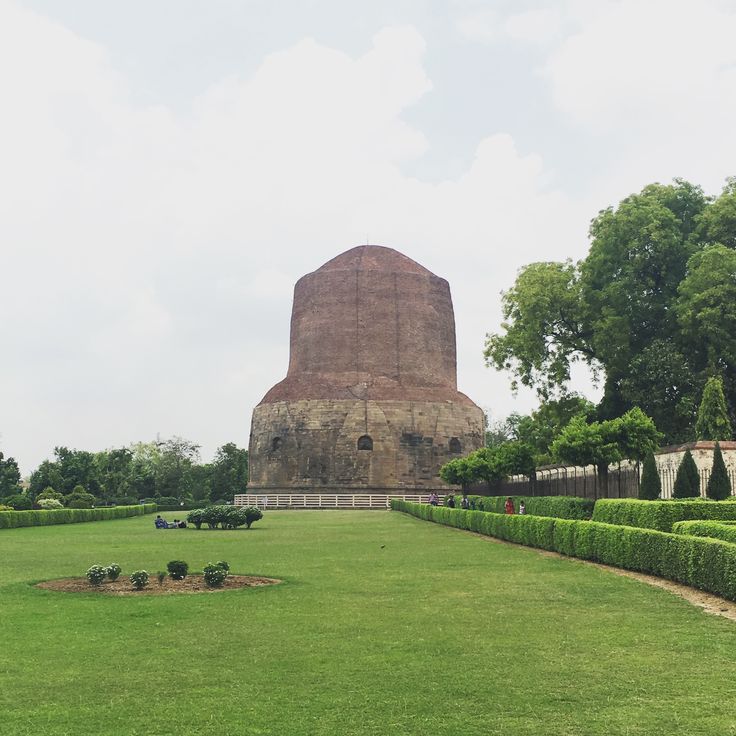
Sarnath is an important archaeological and pilgrimage site located near Varanasi, Uttar Pradesh, India. It holds great significance in Buddhism as it is believed to be the place where Gautama Buddha, the founder of Buddhism, delivered his first sermon to a group of five disciples after attaining enlightenment. This event is known as the Dhammacakkappavattana Sutta, and it marked the beginning of the Buddha's teaching career.
The main temple in Sarnath is the Dhamek Stupa, which is believed to mark the spot where the Buddha gave his first sermon. The stupa is a massive structure and one of the most prominent monuments in Sarnath. It is cylindrical in shape and has intricate carvings depicting scenes from the life of the Buddha.
Chaukhandi Stupa: This stupa is believed to be the spot where the Buddha met his first five disciples. It is a lofty mound with an octagonal tower.
Mulagandha Kuti Vihar: A modern Buddhist temple, it was built by the Mahabodhi Society and is known for its beautiful frescoes depicting the life of the Buddha.
Archaeological Museum: The Sarnath Archaeological Museum houses a rich collection of artifacts and sculptures from the ancient period, showcasing the historical and cultural significance of Sarnath.
Ashoka Pillar: The Ashoka Pillar at Sarnath is one of the pillars erected by the Mauryan Emperor Ashoka in various parts of his empire. The lion capital of this pillar is now the national emblem of India.
Sarnath is an important pilgrimage site for Buddhists, attracting visitors and pilgrims from around the world. The serene atmosphere and historical importance make it a place of contemplation and reflection for those interested in Buddhist history and teachings.
Sarnath is an important pilgrimage site and tourist destination located in Varanasi, Uttar Pradesh, India. It is known as the place where Gautama Buddha delivered his first sermon after attaining enlightenment and is considered to be the birthplace of Buddhism.
Sarnath is home to several important monuments and temples that are significant to both Buddhists and Hindus. Visitors can explore the ruins of the ancient city of Sarnath, visit the Dhamek Stupa, the Chaukhandi Stupa, the Ashoka Pillar, and the Sarnath Museum. The site is also a popular destination for meditators and spiritual seekers, and offers a peaceful and serene atmosphere for reflection and introspection.
Whether you are a student of Buddhism, an admirer of ancient Indian architecture, or simply interested in exploring the rich cultural and spiritual heritage of Varanasi, Sarnath is a must-visit destination.
9. Bharat Mata Temple
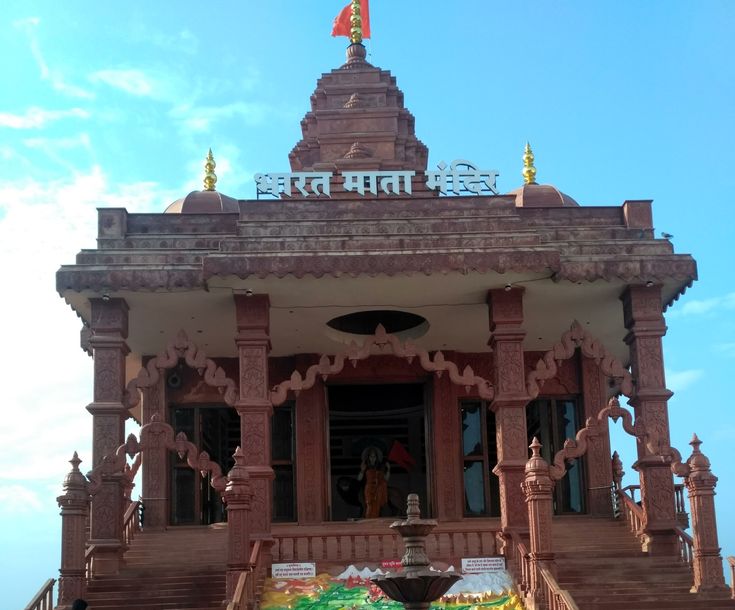
The Bharat Mata Temple, located in Varanasi, India, is a unique temple dedicated to Bharat Mata, which translates to "Mother India." Unlike traditional temples that worship deities, the Bharat Mata Temple is dedicated to the personification of India as a motherland. It reflects the concept of the nation as a nurturing and protective mother.
Location: The temple is situated in Varanasi, Uttar Pradesh, near the Mahatma Gandhi Kashi Vidyapeeth campus.
Concept and Construction: The Bharat Mata Temple was inaugurated by Mahatma Gandhi in 1936. The temple was conceived by Babu Shiv Prasad Gupta, a freedom fighter, and it was built with the help of nationalists who wanted to promote a sense of patriotism and unity during the Indian independence movement.
Architecture: The temple is a simple yet impressive eight-story structure. Each floor is dedicated to a specific theme or aspect of India's history, culture, and spirituality. The temple is adorned with a map of undivided India on the ground floor.
Dedication to National Heroes: Different floors of the temple are dedicated to various national heroes, leaders, and deities from different religions and regions of India. This inclusive approach symbolizes the unity in diversity that characterizes the country.
Religious Harmony: The Bharat Mata Temple is a symbol of religious harmony, as it includes representations of major religious figures such as Buddha, Mahavira, Guru Nanak, and others alongside Hindu gods and goddesses.
Mother India Statue: The temple houses a marble relief map of India and a statue of Bharat Mata, depicting her as a four-armed deity holding a book, a mala (rosary), a water pot, and a sheaf of paddy. This representation signifies various aspects of India, including knowledge, spirituality, prosperity, and agriculture.
The Bharat Mata Temple serves as a patriotic symbol and a place for visitors to appreciate and reflect upon the diverse cultural and historical heritage of India. It's a unique temple that goes beyond traditional religious worship, emphasizing the idea of India as a mother figure.
Bharat Mata Temple is a unique temple dedicated to the motherland, India, located in Varanasi, Uttar Pradesh. It is considered to be one of the most patriotic temples in India and is visited by both Hindu and non-Hindu devotees from all over the world.
The temple features a large marble statue of a map of India and is surrounded by eight smaller statues depicting important personalities from Indian history, including Mahatma Gandhi and Rabindranath Tagore. The temple is also adorned with frescoes and paintings depicting scenes from Indian history and mythology.
Visitors to the Bharat Mata Temple can expect a peaceful and serene atmosphere, with the opportunity to pay their respects to the motherland and reflect on India's rich cultural and spiritual heritage. Whether you are a resident of Varanasi or just passing through, a visit to the Bharat Mata Temple is a must for anyone interested in India's history and culture.
10. Tulsi Manas Mandir
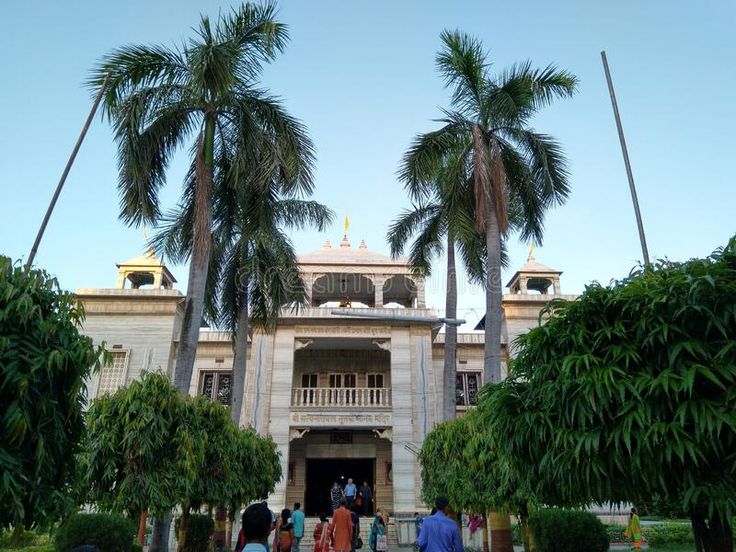
Tulsi Manas Mandir is a Hindu temple dedicated to Lord Rama, located in Varanasi, Uttar Pradesh. The temple is considered to be one of the most revered shrines in the city and attracts a large number of pilgrims and tourists from all over India and the world.
The Tulsi Manas Mandir is a Hindu temple dedicated to Lord Rama, situated in Varanasi, Uttar Pradesh, India. It is named after the medieval Indian poet-saint Tulsidas, who is best known for his epic poem "Ramcharitmanas," an important scripture in the Hindu tradition that narrates the life of Lord Rama.
Location: The temple is located in the Durgakund area of Varanasi, on the banks of the River Ganges.
Construction and Design: The Tulsi Manas Mandir was constructed in the 20th century, with the foundation stone laid by the then Prime Minister of India, Jawaharlal Nehru, in 1964. The temple is built with white marble and is known for its exquisite carvings and artwork depicting scenes from the Ramcharitmanas. The outer walls of the temple are adorned with verses from Tulsidas's epic.
Historical Significance: The temple is built at the place where Tulsidas is believed to have written the Ramcharitmanas, the epic poem that narrates the life and teachings of Lord Rama. Tulsidas is said to have composed this work in the 16th century at this very spot, which was previously a sacred grove.
Shrine of Lord Rama: The main deity of the temple is Lord Rama, and the inner sanctum houses an idol of Rama along with his consort Sita, Lakshmana, and Lord Hanuman. Devotees visit the temple to seek blessings and immerse themselves in the teachings of Ramcharitmanas.
Ramcharitmanas Wall: One of the distinctive features of the Tulsi Manas Mandir is the wall inscribed with the entire text of Ramcharitmanas in Hindi. Pilgrims and visitors can read the verses as they walk along this wall.
Surrounding Gardens: The temple is surrounded by well-maintained gardens, providing a peaceful and serene environment for devotees and tourists.
The Tulsi Manas Mandir is not only a place of worship but also a significant cultural and historical site associated with the life and work of Tulsidas. It attracts devotees, scholars, and tourists interested in exploring the rich literary and religious heritage of Hinduism.
Tulsi Manas Mandir is famous for its association with the Hindu epic, Ramcharitmanas, which is believed to have been written by the saint-poet Tulsidas. The temple walls are adorned with verses from the Ramcharitmanas and scenes from Lord Rama's life, making it a spiritual and cultural hub for devotees of Lord Rama.
In addition to its religious significance, Tulsi Manas Mandir is also known for its beautiful architecture and intricate carvings, making it a popular tourist destination in Varanasi. Whether you are a devout Hindu or simply interested in India's rich cultural heritage, a visit to Tulsi Manas Mandir is a must for anyone visiting Varanasi.
11. Kardmeshwar Mahadeva
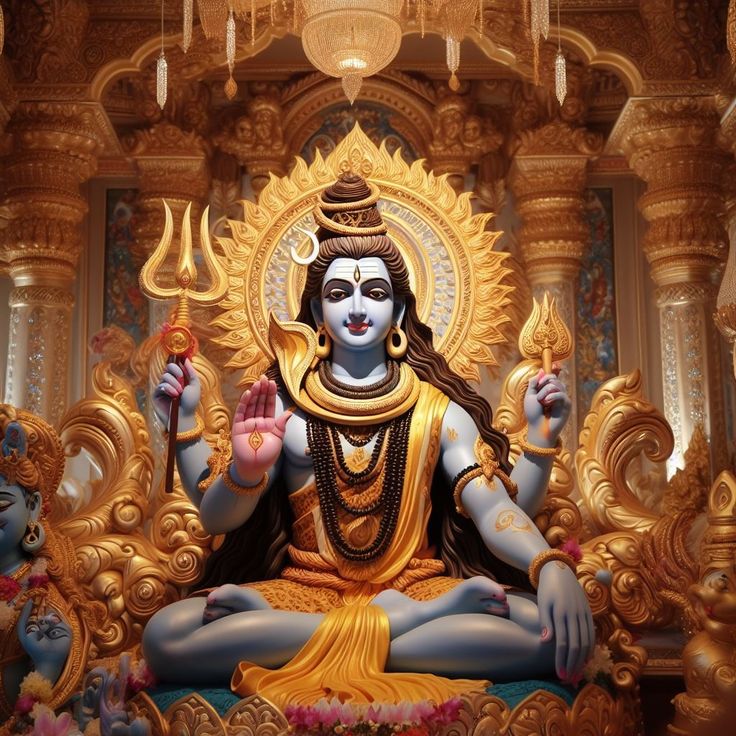
For detailed and accurate information about Kardmeshwar Mahadeva in Varanasi, I recommend checking with local authorities, Varanasi tourism offices, or Hindu religious institutions in the area. They may provide you with the most up-to-date details regarding the temple's location, history, and significance.
If Kardmeshwar Mahadeva has gained prominence or recognition after my last update, it's a good idea to look for recent travel guides, online resources, or news articles for the latest information.
I appreciate your understanding, and if you have any other questions or if there's anything else I can assist you with, please feel free to let me know.
Kardmeshwar Mahadeva Temple is a Hindu temple dedicated to Lord Shiva, located in Varanasi, Uttar Pradesh. The temple is considered to be one of the most sacred shrines in the city and attracts a large number of pilgrims and tourists from all over India and the world.
Kardmeshwar Mahadeva Temple is famous for its association with Lord Shiva and is believed to be one of the Jyotirlinga shrines, which are considered to be the most sacred shrines dedicated to Lord Shiva. The temple is known for its serene and peaceful atmosphere, making it a popular destination for devotees of Lord Shiva seeking spiritual solace.
In addition to its religious significance, Kardmeshwar Mahadeva Temple is also known for its beautiful architecture and intricate carvings, making it a popular tourist destination in Varanasi. Whether you are a devout Hindu or simply interested in India's rich cultural heritage, a visit to Kardmeshwar Mahadeva Temple is a must for anyone visiting Varanasi.
12. New Vishwanath Temple
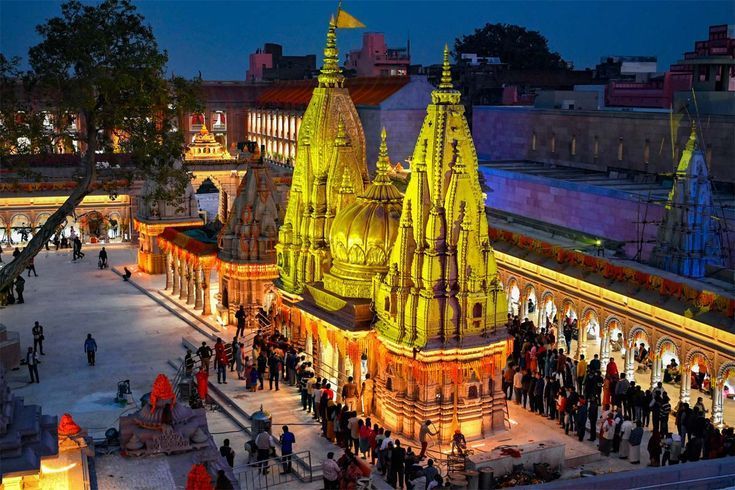
As of my last knowledge update in January 2022, the "New Vishwanath Temple" in Varanasi, also known as the "Birla Temple" or "Banaras Hindu University (BHU) Vishwanath Temple," might refer to the temple situated on the campus of Banaras Hindu University. Please note that details may have changed, and it's advisable to check for the latest information.
Location: The temple is located on the campus of Banaras Hindu University (BHU) in Varanasi, Uttar Pradesh, India.
Construction: The New Vishwanath Temple was built by the Birla family and inaugurated by Mahatma Gandhi in 1936. The Birlas are a prominent industrialist family in India known for their philanthropic activities, including the construction of various temples.
Architectural Style: The temple follows a blend of Hindu and European architectural styles. It is made of white marble and is characterized by intricate carvings and beautiful sculptures.
Deity: The presiding deity of the New Vishwanath Temple is Lord Shiva. The temple complex also includes shrines dedicated to other deities.
Artwork: The walls of the temple are adorned with scenes from Hindu mythology, and there are carvings depicting various deities and mythological stories.
BHU Campus: The temple is situated within the sprawling campus of Banaras Hindu University, one of the largest residential universities in Asia. The campus itself is known for its architectural beauty and educational significance.
It's worth noting that there is another famous temple in Varanasi called the Kashi Vishwanath Temple, which is one of the holiest and most revered temples dedicated to Lord Shiva in the city. The New Vishwanath Temple associated with Banaras Hindu University serves as a place of worship for students, staff, and visitors on the BHU campus.
For the latest and most accurate information, especially if there have been changes or developments after January 2022, I recommend checking with local authorities or official sources associated with Banaras Hindu University
New Vishwanath Temple, also known as Birla Temple, is a Hindu temple dedicated to Lord Vishwanath, located in Varanasi, Uttar Pradesh. It is one of the most famous and revered temples in the city and is known for its grand architecture and beautiful idols of Lord Vishwanath and other Hindu deities.
The New Vishwanath Temple was built in 1966 by the Birla family and is considered to be one of the most modern and beautiful temples in Varanasi. It is made of pure white marble and is known for its intricate carvings, beautiful domes, and grand arches. The temple also has a large statue of Lord Vishwanath and is a popular destination for devotees of Lord Shiva seeking spiritual solace.
In addition to its religious significance, the New Vishwanath Temple is also known for its association with the Banaras Hindu University, one of the oldest and most prestigious universities in India. A visit to the temple is a must for anyone interested in Hindu religion, architecture, and cultural heritage, and offers a unique insight into the rich and diverse traditions of India.
13. Tridev Temple
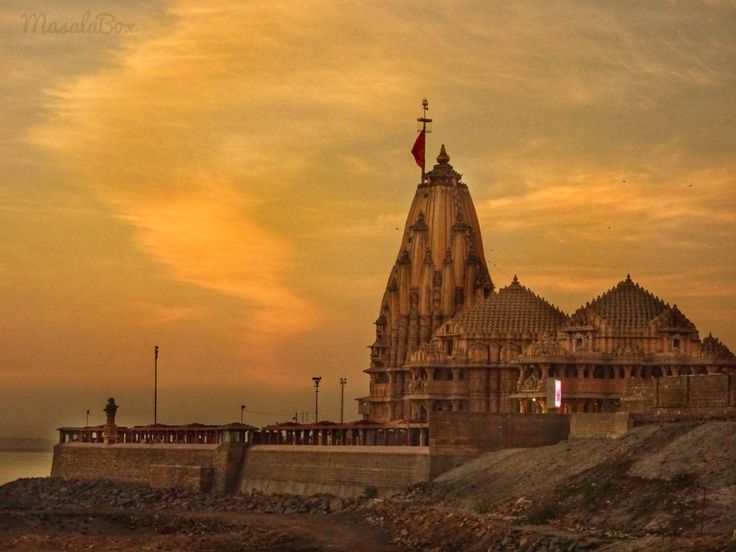
As of my last knowledge update in January 2022, there are several temples across India known as Tridev Temples, and the specific details can vary depending on the location. The term "Tridev" refers to the Hindu Trinity, consisting of Brahma (the creator), Vishnu (the preserver), and Shiva (the destroyer).
One well-known Tridev Temple is located in Rudraprayag, Uttarakhand. This temple is dedicated to the Trinity—Lord Brahma, Lord Vishnu, and Lord Shiva. Here are some details about the Tridev Temple in Rudraprayag:
Location: The Tridev Temple in Rudraprayag is situated at the confluence of the Alaknanda and Mandakini rivers, a place known as Rudraprayag.
Significance: The temple is significant because it is believed to be the place where Narad Muni, a revered sage in Hinduism, meditated to attain a vision of the Trinity—Brahma, Vishnu, and Shiva—all in one place.
Architecture: The temple is constructed in the traditional Himalayan style of architecture. It may have distinct sections or sanctums dedicated to each of the three deities.
Confluence of Rivers: The location of the Tridev Temple is also significant due to the confluence of the Alaknanda and Mandakini rivers, adding to the spiritual and natural beauty of the surroundings.
It's essential to note that there might be other temples across India with the name "Tridev Temple," each with its own unique features and significance.
If you are referring to a different Tridev Temple or a more recent development, I recommend checking local sources, travel guides, or contacting local authorities for the most accurate and up-to-date information on that specific temple
Tridev Temple, also known as Triade Temple, is a Hindu temple dedicated to the Holy Trinity of Hinduism - Brahma, Vishnu, and Mahesh, located in Varanasi, Uttar Pradesh. It is one of the unique temples in the city as it is dedicated to the three major Hindu gods and is considered to be one of the most sacred places of worship in the region.
Tridev Temple is a must-visit for anyone interested in Hindu religion and culture. The temple is known for its beautiful architecture, intricate carvings, and serene atmosphere. It is also a popular destination for devotees of Brahma, Vishnu, and Mahesh, who come to offer their prayers and seek spiritual solace.
The temple is surrounded by lush green gardens and has a tranquil atmosphere that makes it an ideal place to escape the hustle and bustle of the city. It is a perfect destination for those looking to immerse themselves in the spiritual atmosphere of Varanasi and learn more about Hinduism. Whether you are a devotee or simply an admirer of Hindu art and architecture, the Tridev Temple is a must-visit for anyone visiting Varanasi.
14. Purabmukhi Shani Dev Mandir
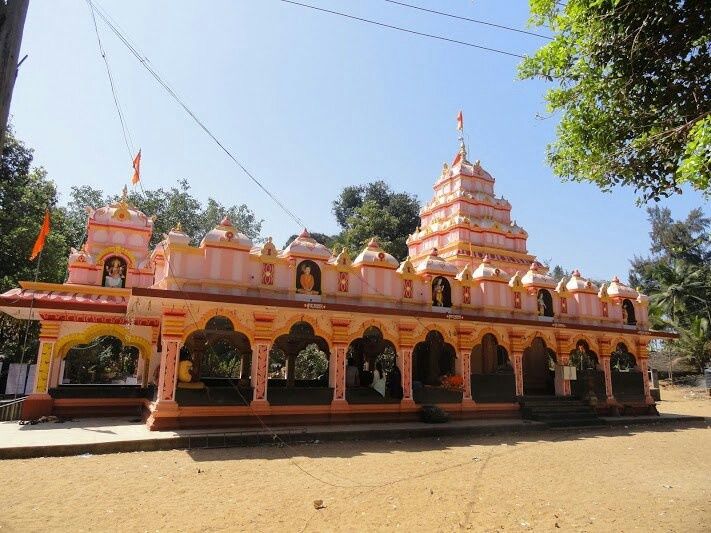
As of my last knowledge update in January 2022, there are several temples across India known as Tridev Temples, and the specific details can vary depending on the location. The term "Tridev" refers to the Hindu Trinity, consisting of Brahma (the creator), Vishnu (the preserver), and Shiva (the destroyer).
One well-known Tridev Temple is located in Rudraprayag, Uttarakhand. This temple is dedicated to the Trinity—Lord Brahma, Lord Vishnu, and Lord Shiva. Here are some details about the Tridev Temple in Rudraprayag:
Location: The Tridev Temple in Rudraprayag is situated at the confluence of the Alaknanda and Mandakini rivers, a place known as Rudraprayag.
Significance: The temple is significant because it is believed to be the place where Narad Muni, a revered sage in Hinduism, meditated to attain a vision of the Trinity—Brahma, Vishnu, and Shiva—all in one place.
Architecture: The temple is constructed in the traditional Himalayan style of architecture. It may have distinct sections or sanctums dedicated to each of the three deities.
Confluence of Rivers: The location of the Tridev Temple is also significant due to the confluence of the Alaknanda and Mandakini rivers, adding to the spiritual and natural beauty of the surroundings.
It's essential to note that there might be other temples across India with the name "Tridev Temple," each with its own unique features and significance.
If you are referring to a different Tridev Temple or a more recent development, I recommend checking local sources, travel guides, or contacting local authorities for the most accurate and up-to-date information on that specific temple
Purabmukhi Shani Dev Mandir is a Hindu temple dedicated to Lord Shani, one of the nine celestial bodies in Hindu astrology, located in Varanasi, Uttar Pradesh. The temple is known for its beautiful architecture, intricate carvings, and peaceful atmosphere. It is one of the most visited Shani temples in the city and is considered to be a place of great spiritual significance.
The temple is surrounded by lush green gardens and has a serene atmosphere that makes it an ideal place to escape the hustle and bustle of the city. Devotees come to the temple to offer prayers and seek blessings from Lord Shani, who is considered to be the harbinger of justice and is revered for his ability to bring balance and stability to the lives of his followers.
Whether you are a devotee of Lord Shani or simply interested in Hindu religion and culture, the Purabmukhi Shani Dev Mandir is a must-visit for anyone visiting Varanasi. The temple is a perfect destination for those looking to immerse themselves in the spiritual atmosphere of the city and learn more about Hindu astrology.
In addition to its spiritual significance, the Purabmukhi Shani Dev Mandir is also known for its beautiful architecture and intricate carvings. Visitors will be amazed by the intricate details and intricate sculptures that adorn the walls and pillars of the temple, making it a visual feast for anyone who appreciates art and architecture. So, if you're looking for a peaceful and spiritual experience, the Purabmukhi Shani Dev Mandir is the perfect destination for you.
15. Man Mandir Ghat

Man Mandir Ghat is one of the prominent ghats (steps leading to the river) along the Ganges River in Varanasi, Uttar Pradesh, India. The ghats in Varanasi hold significant cultural, religious, and historical importance, and Man Mandir Ghat is no exception. Here are some details about Man Mandir Ghat:
Location: Man Mandir Ghat is situated along the western bank of the Ganges River in Varanasi, downstream from the famous Dasaswamedh Ghat.
Historical Significance: The ghat is named after the Man Mandir Palace, a historical structure built by Maharaja Man Singh of Amber (Rajasthan) in the 16th century. The palace is located on the ghat and is known for its distinctive architecture.
Man Mandir Observatory: The Man Mandir Palace also housed an observatory built by Maharaja Sawai Jai Singh II of Jaipur in the 18th century. The observatory, with its unique astronomical instruments, reflects the scientific advancements of the time.
Architecture: The architecture of Man Mandir Ghat showcases a blend of medieval Rajput and Mughal styles. The ghat has steps leading down to the Ganges, and the palace on top adds to the visual appeal of the surroundings.
Shiva Temple: There is a Shiva temple on the ghat, known as the Man Mandir Ghat Temple. Devotees and visitors often come here to offer prayers and participate in religious rituals.
Aarti and Festivals: Like many other ghats in Varanasi, Man Mandir Ghat is a site for various religious ceremonies and festivals. The Ganga Aarti, performed in the evenings, is a mesmerizing ritual that draws both locals and tourists.
Riverfront Views: Being along the riverfront, Man Mandir Ghat provides excellent views of the Ganges River and is a popular spot for boat rides.
It's important to note that the ghats of Varanasi are not just physical structures but are integral to the spiritual and cultural fabric of the city. Pilgrims, tourists, and locals alike visit these ghats to experience the religious rituals, cultural traditions, and the spiritual ambiance that Varanasi is known for
Man Mandir Ghat is located in Varanasi and can be easily reached by taxi or local transport from anywhere in the city. It is also well connected by road, rail and air to other major cities in India.





